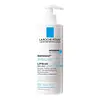What's inside
What's inside
 Key Ingredients
Key Ingredients

 Benefits
Benefits

 Concerns
Concerns

 Ingredients Side-by-side
Ingredients Side-by-side

Water
Skin ConditioningGlycerin
HumectantIsopropyl Palmitate
EmollientButyrospermum Parkii Butter
Skin ConditioningPropanediol
SolventCetyl Alcohol
EmollientMyristyl Myristate
EmollientZea Mays Starch
AbsorbentNiacinamide
SmoothingOphiopogon Japonicus Root Extract
Skin ConditioningCarbomer
Emulsion StabilisingSodium Hydroxide
BufferingMannose
HumectantHydroxyacetophenone
AntioxidantCaprylyl Glycol
EmollientVitreoscilla Ferment
Skin ConditioningCitric Acid
BufferingMaltodextrin
AbsorbentPolyglyceryl-3 Methylglucose Distearate
EmulsifyingTocopherol
AntioxidantWater, Glycerin, Isopropyl Palmitate, Butyrospermum Parkii Butter, Propanediol, Cetyl Alcohol, Myristyl Myristate, Zea Mays Starch, Niacinamide, Ophiopogon Japonicus Root Extract, Carbomer, Sodium Hydroxide, Mannose, Hydroxyacetophenone, Caprylyl Glycol, Vitreoscilla Ferment, Citric Acid, Maltodextrin, Polyglyceryl-3 Methylglucose Distearate, Tocopherol
Water
Skin ConditioningGlycerin
HumectantButyrospermum Parkii Oil
EmollientCaprylic/Capric Triglyceride
MaskingCarthamus Tinctorius Seed Oil
MaskingIsopropyl Palmitate
EmollientC14-22 Alcohols
Emulsion StabilisingDimethicone
EmollientTocopheryl Acetate
AntioxidantAcrylates/C10-30 Alkyl Acrylate Crosspolymer
Emulsion StabilisingBenzoic Acid
MaskingC12-20 Alkyl Glucoside
EmulsifyingC20-22 Alcohols
Emulsion StabilisingC20-22 Alkyl Phosphate
EmulsifyingCamelina Sativa Seed Oil
Skin ConditioningCaprylyl Glycol
EmollientParfum
MaskingGlyceryl Stearate
EmollientHydroxyethyl Acrylate/Sodium Acryloyldimethyl Taurate Copolymer
Emulsion StabilisingPEG-100 Stearate
Polysorbate 60
EmulsifyingSodium Hydroxide
BufferingSorbitan Isostearate
EmulsifyingSqualane
Emollient3-Methyl-5-(2,2,3-Trimethyl-3-Cyclopentenyl)Pent-4-En-2-Ol
PerfumingXanthan Gum
EmulsifyingWater, Glycerin, Butyrospermum Parkii Oil, Caprylic/Capric Triglyceride, Carthamus Tinctorius Seed Oil, Isopropyl Palmitate, C14-22 Alcohols, Dimethicone, Tocopheryl Acetate, Acrylates/C10-30 Alkyl Acrylate Crosspolymer, Benzoic Acid, C12-20 Alkyl Glucoside, C20-22 Alcohols, C20-22 Alkyl Phosphate, Camelina Sativa Seed Oil, Caprylyl Glycol, Parfum, Glyceryl Stearate, Hydroxyethyl Acrylate/Sodium Acryloyldimethyl Taurate Copolymer, PEG-100 Stearate, Polysorbate 60, Sodium Hydroxide, Sorbitan Isostearate, Squalane, 3-Methyl-5-(2,2,3-Trimethyl-3-Cyclopentenyl)Pent-4-En-2-Ol, Xanthan Gum
 Reviews
Reviews

Ingredients Explained
These ingredients are found in both products.
Ingredients higher up in an ingredient list are typically present in a larger amount.
Caprylyl Glycol is a humectant and emollient, meaning it attracts and preserves moisture.
It is a common ingredient in many products, especially those designed to hydrate skin. The primary benefits are retaining moisture, skin softening, and promoting a healthy skin barrier.
Though Caprylyl Glycol is an alcohol derived from fatty acids, it is not the kind that can dry out skin.
This ingredient is also used as a preservative to extend the life of products. It has slight antimicrobial properties.
Learn more about Caprylyl GlycolGlycerin is already naturally found in your skin. It helps moisturize and protect your skin.
A study from 2016 found glycerin to be more effective as a humectant than AHAs and hyaluronic acid.
As a humectant, it helps the skin stay hydrated by pulling moisture to your skin. The low molecular weight of glycerin allows it to pull moisture into the deeper layers of your skin.
Hydrated skin improves your skin barrier; Your skin barrier helps protect against irritants and bacteria.
Glycerin has also been found to have antimicrobial and antiviral properties. Due to these properties, glycerin is often used in wound and burn treatments.
In cosmetics, glycerin is usually derived from plants such as soybean or palm. However, it can also be sourced from animals, such as tallow or animal fat.
This ingredient is organic, colorless, odorless, and non-toxic.
Glycerin is the name for this ingredient in American English. British English uses Glycerol/Glycerine.
Learn more about GlycerinIsopropyl Palmitate is a texture enhancer and emollient. It is an ester of isopropyl alcohol and palmitic acid.
Palmitates are emollients. Emollients help keep your skin soft and smooth by creating a barrier that traps moisture in.
When added to cosmetics, Isopropyl Palmitate creates a silky texture and improves spreadability.
Isopropyl Palmitate may not be fungal acne safe. It can worsen acne prone skin.
Learn more about Isopropyl PalmitateSodium Hydroxide is also known as lye or caustic soda. It is used to adjust the pH of products; many ingredients require a specific pH to be effective.
In small amounts, sodium hydroxide is considered safe to use. However, large amounts may cause chemical burns due to its high alkaline.
Your skin has a natural pH and acid mantle. This acid mantle helps prevent harmful bacteria from breaking through. The acid mantle also helps keep your skin hydrated.
"Alkaline" refers to a high pH level. A low pH level would be considered acidic.
Learn more about Sodium HydroxideWater. It's the most common cosmetic ingredient of all. You'll usually see it at the top of ingredient lists, meaning that it makes up the largest part of the product.
So why is it so popular? Water most often acts as a solvent - this means that it helps dissolve other ingredients into the formulation.
You'll also recognize water as that liquid we all need to stay alive. If you see this, drink a glass of water. Stay hydrated!
Learn more about Water